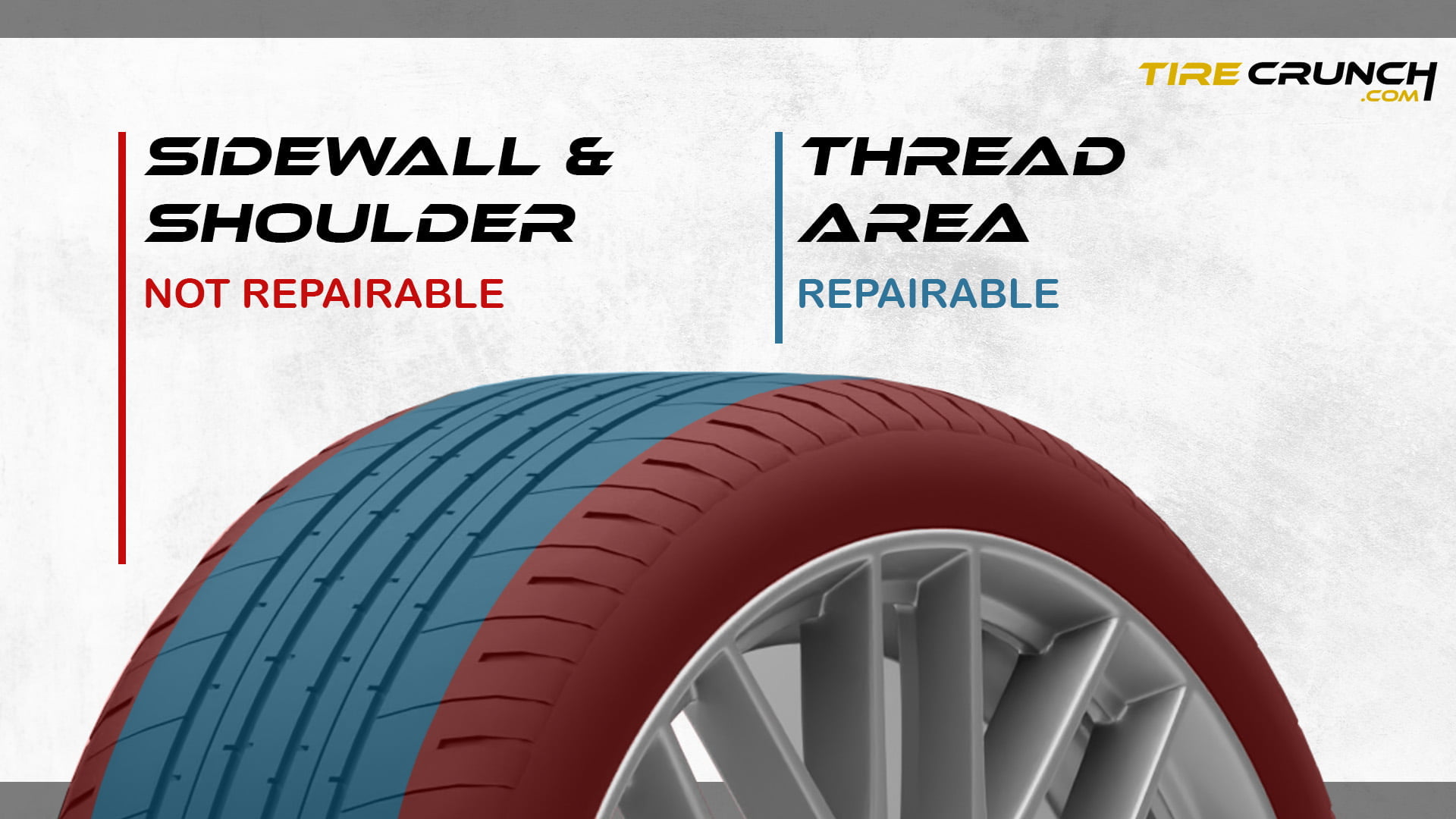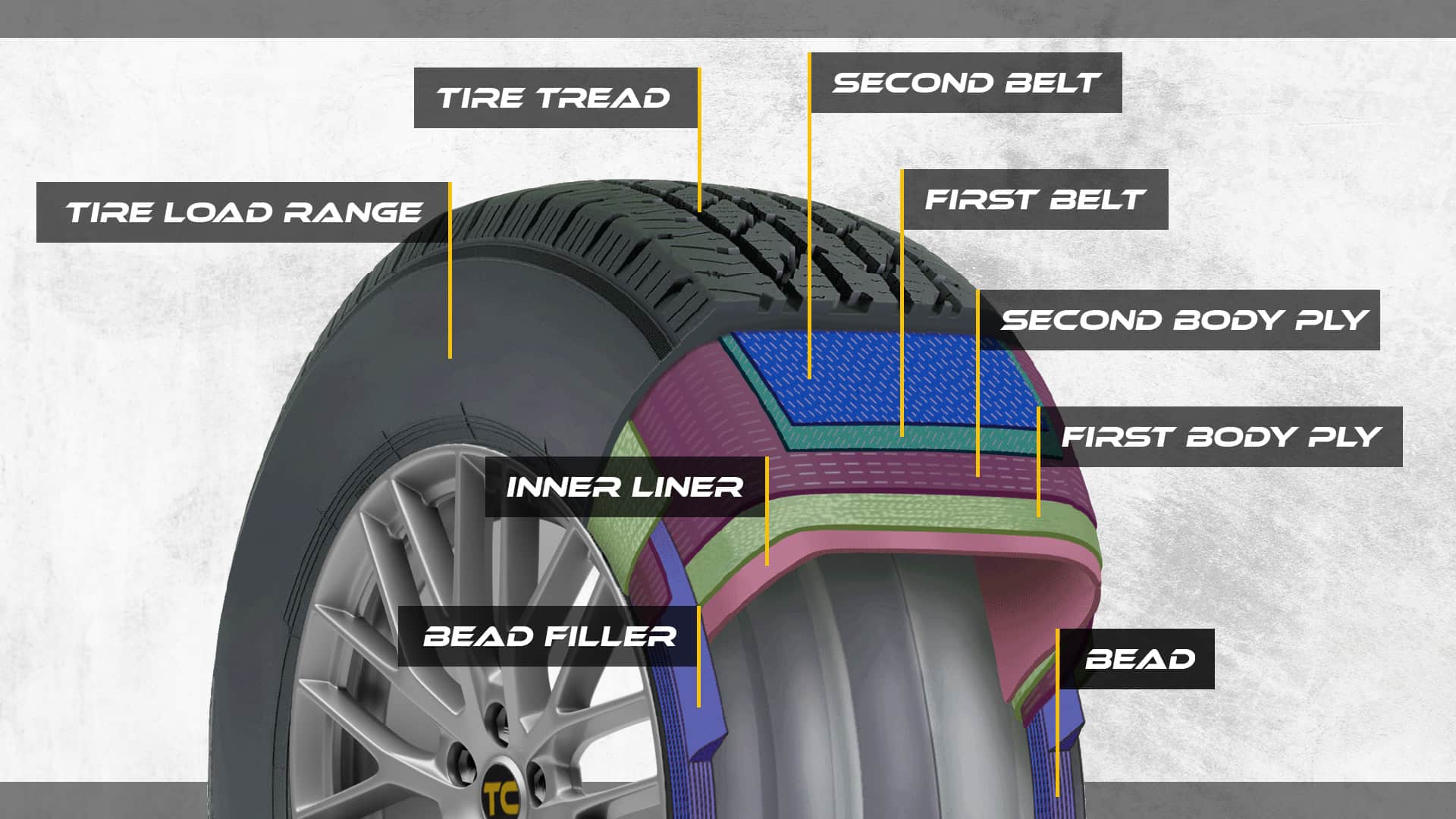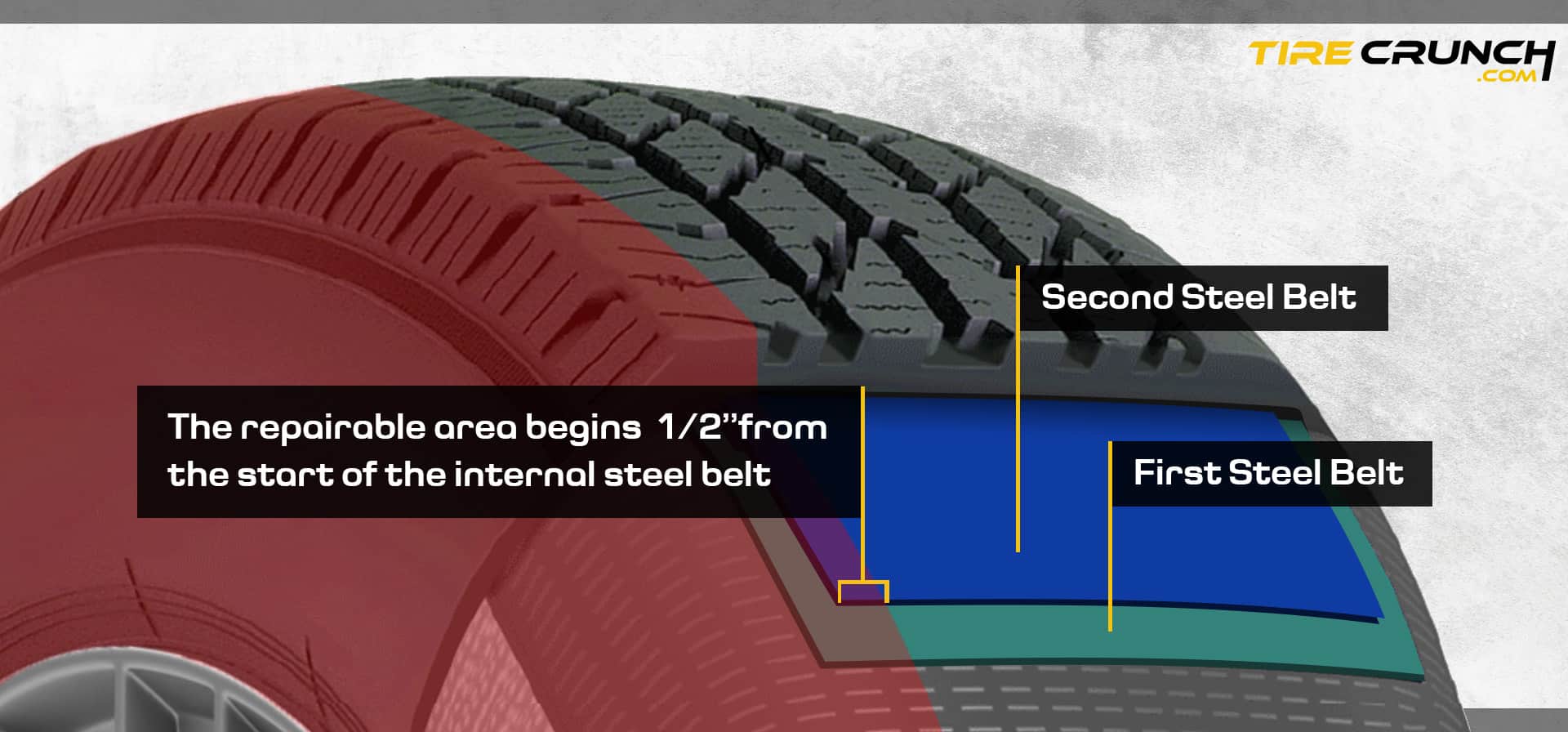How Close To The Sidewall Can A Tire Be Patched? Extensive Research

Just like any other part of your vehicle, tires are subject to wear and tear and sometimes require repair. However, not all types of tire damage are repairable, and attempting to fix irreparable damage can compromise your safety.
In this article, we’ll delve into everything you need to know about patching tires close to the sidewall. We’ll discuss industry standards, factors that affect repairability, and the risks of incorrect repairs. Read on to learn about the types of damage that can be repaired and those that can’t.
Key Takeaways
Understanding tire construction

Tires are made up of multiple layers and components. The outer layer of the tire is known as the tread area, which is responsible for providing traction on the road.
Underneath the tread are several protective layers, including belts, plies, and liner systems, which provide protection against punctures.
The sidewall of the tire is an integral part of its construction and consists of two sides that run along either side of the tire circumference.
Unlike punctures in the tread area, which can potentially be repaired, a puncture in the sidewall can weaken a tire’s structure and cause it to fail unexpectedly – even when driving at slow speeds. As a result, it’s not recommended to attempt patching a tire if there is any damage to its sidewall.
Unlike punctures in the tread area, which can potentially be repaired, a puncture in the sidewall can weaken a tire’s structure and cause it to fail unexpectedly – even when driving at slow speeds. As a result, it’s not recommended to attempt patching a tire if there is any damage to its sidewall.
How Close To The Sidewall Can A Tire Be Patched?

For a tire puncture to be repairable, it must be at least 1″ (2.5 cm) away from the shoulder’s corner or edge.
This is mainly due to two reasons:
Risks And Consequences Of Incorrect Repairs
Incorrect tire repairs can pose serious risks to the safety of your vehicle and those inside it. One major consequence of incorrect repair is damage to the tire’s structural integrity, which can result in blowouts or accidents while driving at high speeds.
In some cases, if someone is injured or their property damaged in an accident caused by a failed tire repair, the person who performed the repair could be held responsible.

This is why it is crucial for tire shops and technicians to follow the U.S. Tire Manufacturers Association’s guidelines that provide a standardized and safe approach to repairing tires and ensure that the repaired tires maintain their structural integrity and can perform as intended.
Many responsible tire shops adhere to U.S. Tire Manufacturers Association’s regulations and will not perform repairs on the tire’s sidewall or within 1 inch from the corner/edge of the tire because it is considered unsafe and unreliable.
What Kind Of Damage To A Tire Can And Cannot Be Repaired?
Learn about the types of damages that can be fixed on a tire and those that cannot, to avoid putting yourself at risk. Keep reading to find out more.
Repairable Damages
Tire damage can vary in severity, but not all types of damage are repairable. Here are some damages that can be repaired:
Irreparable Damages
If a tire has irreparable damage, it means that it cannot be safely repaired and must be replaced. The following damages are considered irreparable:
Related Reading: Do Tire Repairs Affect the Speed Rating of a Tire?
Is It Legal to Patch a Tire on the Sidewall?
The answer depends largely on the guidelines set by different states and countries. In general, however, most jurisdictions have safety regulations that prohibit repairing tires close to the sidewall due to potential safety hazards.
This is because any damage in this area can significantly compromise a tire’s structural integrity, making it unsafe for continued use.
Final Words
In conclusion, patching a tire close to the sidewall is a complicated task and should only be done by trained professionals. The industry standard stipulates that any puncture less than 1 inch away from the tire’s corner or edge cannot be patched because of the diagonal steel belts and the thickness of the shoulder.
The sidewall of the tire is integral to the tire’s construction, and any damage to it can compromise the tire’s structural integrity. Correct tire repairs are essential for the safety of your vehicle and everyone in it.
Tire shops and technicians must follow the guidelines of the Tire Industry Association (TIA) to ensure that the repaired tires maintain their structural integrity and perform as intended.
Patching a tire can save you money, but it’s important to know which damages can and cannot be repaired. Remember that if the damage to the tire is irreparable, it must be replaced.
